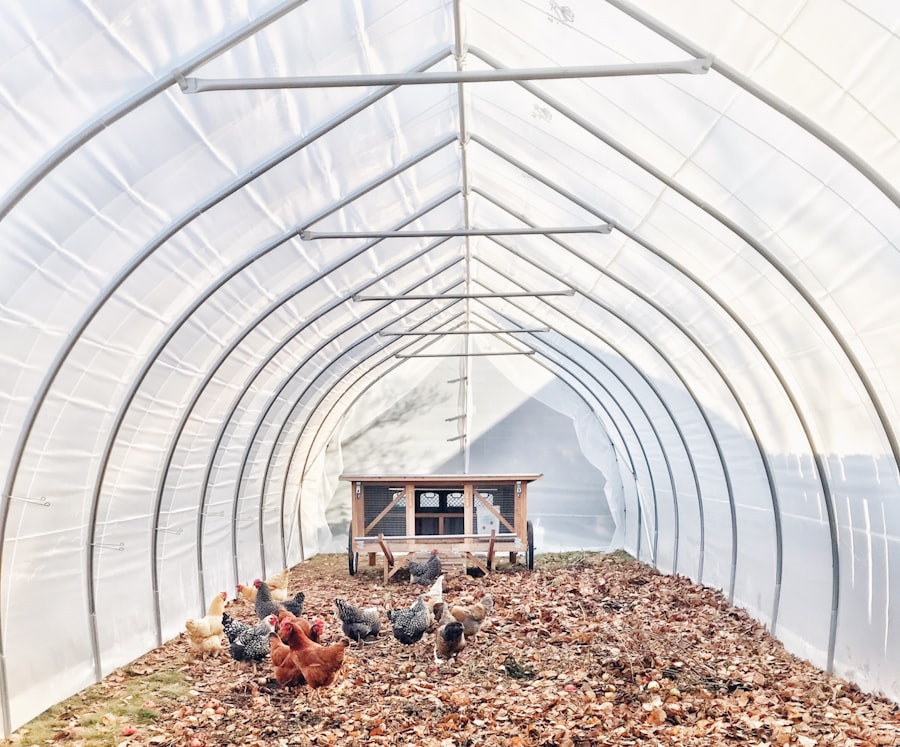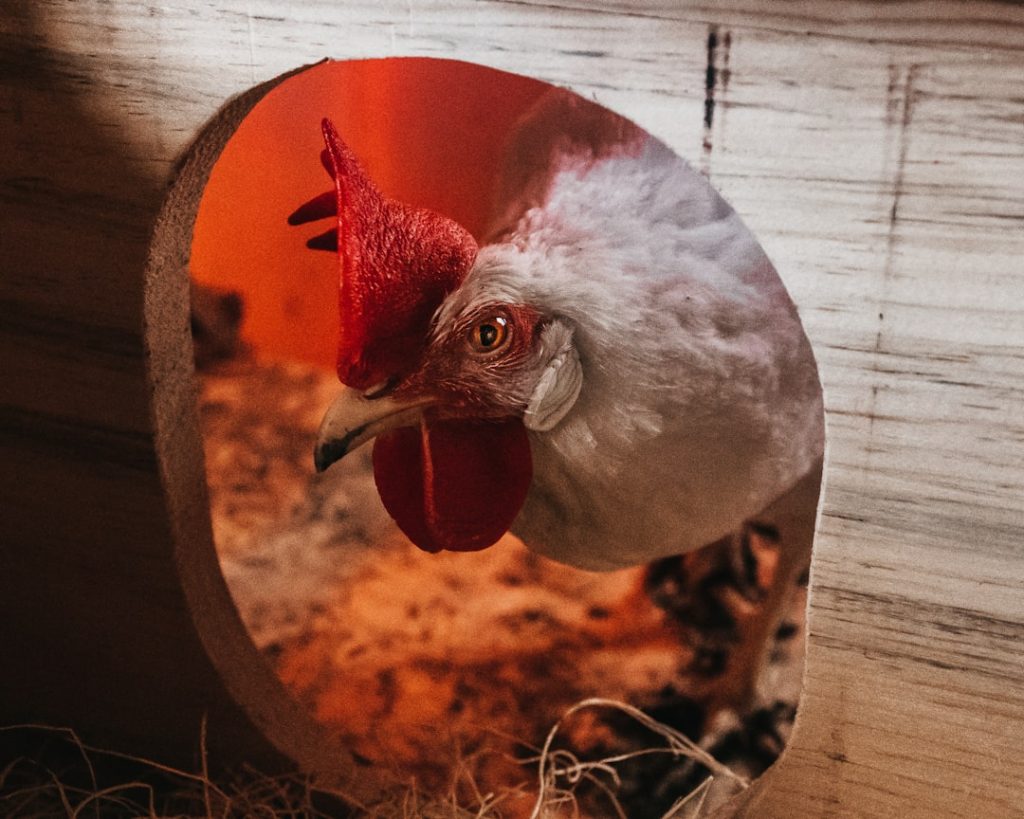Cats are characterized by their independent and inquisitive nature. As natural predators, they possess a strong hunting instinct, constantly scanning their environment for potential prey. Cats are also territorial creatures and may display aggression towards perceived intruders in their domain.
In contrast, chickens are social animals that flourish in group settings. They have an innate tendency to peck and scratch the ground while foraging for food. As prey animals, chickens are easily frightened by sudden movements or loud sounds.
Comprehending the behavioral patterns of both cats and chickens is essential when attempting to establish a harmonious coexistence. It is crucial to recognize that cats have an inherent hunting instinct, while chickens possess a natural inclination to remain vigilant against predators. By acknowledging these behavioral traits, one can implement proactive measures to ensure the safety and well-being of both feline and avian companions.
With appropriate precautions and management strategies, cats and chickens can peacefully coexist. By understanding their respective behaviors and providing a secure environment, it is possible to create a living space that accommodates both species harmoniously.
Table of Contents
- 1 Creating a Secure Chicken Coop
- 2 Using Deterrents to Keep Cats Away
- 3 Providing Enrichment for Cats
- 4 Training Cats to Stay Away from Chickens
- 5 Supervising Cats and Chickens When They’re Together
- 6 Seeking Professional Help if Necessary
- 7 FAQs
- 7.1 What are some ways to keep cats from eating chickens?
- 7.2 How can I secure the chicken coop to keep cats out?
- 7.3 Are there any natural deterrents that can keep cats away from chickens?
- 7.4 Should I keep my chickens and cats separated at all times?
- 7.5 What are some signs that a cat may be a threat to chickens?
Key Takeaways
- Cats and chickens have different behaviors and instincts that need to be understood in order to keep them safe and happy together.
- A secure chicken coop is essential for protecting chickens from predators, including cats.
- Deterrents such as motion-activated sprinklers or ultrasonic devices can help keep cats away from the chicken coop.
- Providing enrichment for cats, such as toys and scratching posts, can help redirect their attention away from the chickens.
- Training cats to stay away from chickens can be achieved through positive reinforcement and consistent boundaries.
- Supervising cats and chickens when they’re together is important to ensure their safety and to intervene if necessary.
- Seeking professional help from a veterinarian or animal behaviorist may be necessary if there are ongoing issues between cats and chickens.
Creating a Secure Chicken Coop
Building a Predator-Proof Coop
The coop should be constructed with sturdy materials and have a secure locking mechanism to prevent any unwanted intruders from gaining access. It’s essential to ensure that the coop is predator-proof by covering any openings with wire mesh and burying the wire at least a foot deep to prevent digging from predators like cats.
Providing a Comfortable Living Space
In addition to the physical structure of the coop, it’s important to provide adequate roosting space and nesting boxes for the chickens. The coop should also be well-ventilated and provide protection from the elements. By creating a secure and comfortable living space for your chickens, you can minimize the risk of them being targeted by cats or other predators.
Ensuring the Safety and Well-being of Your Flock
Creating a secure chicken coop is essential for the safety and well-being of your chickens. By taking proactive measures to prevent access from predators like cats, you can create a safe and secure environment for your flock to thrive.
Using Deterrents to Keep Cats Away

There are several deterrents that can be used to keep cats away from areas where they are not welcome, such as the chicken coop. One effective method is to use scent deterrents, such as citrus peels or coffee grounds, which cats find unpleasant and will avoid. Another option is to use motion-activated sprinklers or ultrasonic devices that emit a high-pitched sound when they detect movement, which can startle cats and deter them from entering the area.
Physical barriers, such as fences or netting, can also be effective in keeping cats away from the chicken coop. By creating a barrier that cats cannot easily climb or jump over, you can prevent them from gaining access to the coop and potentially harming the chickens. It’s important to regularly inspect the perimeter of the coop for any potential entry points and take proactive measures to secure them.
Using deterrents to keep cats away from the chicken coop is an important part of creating a safe environment for your chickens. By implementing these measures, you can minimize the risk of potential conflicts between cats and chickens.
Providing Enrichment for Cats
Providing enrichment for your cats is essential for their physical and mental well-being. Cats are natural hunters and need opportunities to engage in activities that mimic their natural behaviors. Providing toys that encourage hunting and pouncing, such as feather wands or interactive puzzle feeders, can help satisfy their predatory instincts and keep them mentally stimulated.
In addition to toys, providing vertical space for your cats to climb and perch can also provide enrichment. Cats enjoy being able to survey their environment from high vantage points, so providing cat trees or shelves can help fulfill this need. It’s also important to provide scratching posts to allow cats to engage in natural scratching behaviors and maintain their claws.
Providing enrichment for your cats is essential for their overall well-being. By offering opportunities for them to engage in natural behaviors and providing mental stimulation, you can help prevent behavioral issues and ensure that they lead happy and fulfilling lives.
Training Cats to Stay Away from Chickens
Training your cat to stay away from the chicken coop can be achieved through positive reinforcement techniques. One method is to use a clicker and treats to reward your cat for staying away from the coop or showing calm behavior around the chickens. By associating positive experiences with staying away from the coop, you can help your cat learn to avoid that area.
Another approach is to use deterrents, such as a motion-activated air spray or noise-making device, to discourage your cat from approaching the chicken coop. By consistently using these deterrents when your cat attempts to approach the coop, you can help them learn that it is an off-limits area. Training your cat to stay away from the chicken coop requires patience and consistency.
By using positive reinforcement techniques and deterrents, you can help your cat understand boundaries and minimize the risk of potential conflicts with the chickens.
Supervising Cats and Chickens When They’re Together

Close Supervision is Key
Supervising cats and chickens when they are together is essential for ensuring their safety and well-being. It’s important to closely monitor their interactions and intervene if necessary to prevent any potential conflicts. By supervising their interactions, you can also observe their behavior and make adjustments as needed to create a harmonious living environment for both species.
Gradual Introduction is Crucial
When introducing cats and chickens, it’s important to do so gradually and in a controlled manner. This can help both species become accustomed to each other’s presence and reduce the likelihood of any negative interactions. It’s also important to provide separate spaces for both cats and chickens within the same area, so they have the opportunity to coexist without feeling threatened.
Creating a Safe and Harmonious Environment
Supervising cats and chickens when they are together is an important part of creating a harmonious living environment for both species. By closely monitoring their interactions and making adjustments as needed, you can help ensure their safety and well-being.
Seeking Professional Help if Necessary
If you are experiencing ongoing issues with cats and chickens coexisting, it may be necessary to seek professional help. A veterinarian or animal behaviorist can provide guidance on how to manage their interactions and address any behavioral issues that may be contributing to conflicts. Professional help can also be beneficial if you are unsure of how to safely introduce cats and chickens or if you are experiencing challenges with training your cat to stay away from the chicken coop.
Seeking guidance from a professional can provide valuable insights and strategies for creating a harmonious living environment for both species. Seeking professional help if necessary can provide valuable support and guidance for managing the interactions between cats and chickens. By consulting with experts in animal behavior, you can gain valuable insights into how to create a safe and harmonious environment for both species to coexist.
If you’re looking for ways to protect your chickens from predators, you may also be interested in learning about how to keep quails safe while they sit on their eggs. Check out this article on PoultryWizard for tips on keeping quails safe during the breeding process.
FAQs
What are some ways to keep cats from eating chickens?
Some ways to keep cats from eating chickens include providing a secure coop for the chickens, using deterrents such as motion-activated sprinklers or ultrasonic devices, and keeping the cats well-fed to reduce their hunting instincts.
How can I secure the chicken coop to keep cats out?
To secure the chicken coop, you can use hardware cloth to cover any openings, including windows and vents. Make sure the coop has a secure latch and consider adding a perimeter fence to keep cats away.
Are there any natural deterrents that can keep cats away from chickens?
Some natural deterrents that can keep cats away from chickens include planting strong-smelling herbs such as lavender or rosemary around the coop, using citrus peels or coffee grounds as a natural repellent, and placing prickly plants or chicken wire around the coop to discourage cats from approaching.
Should I keep my chickens and cats separated at all times?
It is generally a good idea to keep chickens and cats separated, especially when the chickens are free-ranging. However, with proper training and supervision, some cats can coexist peacefully with chickens.
What are some signs that a cat may be a threat to chickens?
Some signs that a cat may be a threat to chickens include stalking behavior, pouncing or chasing the chickens, and showing a keen interest in the coop or the chickens’ feeding area. If you notice these behaviors, it’s important to take steps to keep the chickens safe.
Meet Walter, the feathered-friend fanatic of Florida! Nestled in the sunshine state, Walter struts through life with his feathered companions, clucking his way to happiness. With a coop that’s fancier than a five-star hotel, he’s the Don Juan of the chicken world. When he’s not teaching his hens to do the cha-cha, you’ll find him in a heated debate with his prized rooster, Sir Clucks-a-Lot. Walter’s poultry passion is no yolk; he’s the sunny-side-up guy you never knew you needed in your flock of friends!







